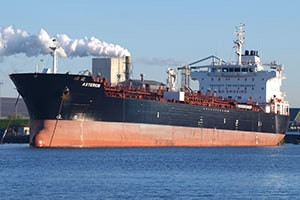We use the term ‘marine environment’ to describe our beaches, the entrance to rivers, coral reefs and the seas and oceans. The marine environment encompasses the billions of animals and plants in these areas and their atmosphere. Our seas and oceans are home to endemic species and provide living conditions for these unique communities. The marine environment also supports commercial and recreational fisheries. Many countries of the world depend almost entirely on the sea for their food. The marine environment must thus be protected from pollution by everyone. Pollution can cause grave harm or even kill the plants and animals that live in the sea. International regulations place strict laws on ships to curb the damage and protect this marine life which feeds off a range of marine animal or plant life. If we harm plant life, pollution impacts the lives of all animals such as fish, crabs, crayfish and so on. Many forms of pollution can harm the marine environment. The types of pollutants that may originate from ships include oil, garbage sewage, air pollution from the ship’s engines and bunker fuel, along with the anti-fouling paint on a ship’s hull.
This course, ‘Marine MARPOL Convention on Air Pollution’, discusses the severe pollution caused to the marine environment and the international classification of marine areas. We will teach you about the rights and responsibilities of nations concerning the use of the world's oceans, establishing guidelines for businesses and the environment, in addition to the management of marine natural resources. Determine the United States position on the ‘Law of The Seas’ and study the main provisions of the convention, considering the significant conventions formed to curb marine pollution and regulate the use of the world's oceans by individual states. All countries have a fundamental obligation to protect the marine environment, including the flag state and port state's responsibilities. Analyse the international efforts, conventions and protocols included in the International Convention for the Prevention of Pollution from Ships (MARPOL) Annex VI to curb air pollution by ships. You will learn about the definitions, applications, and port state control reports contained in the articles and protocols of the MARPOL. Next, study a summary of the MARPOL 73/78 Annex that addresses pollution at sea and coastal waters. Investigate the detentions caused by violations, which cause undue delay to ships, and finally explore the general obligations and implementation of the articles of the conventions.
This course’s main aim is to examine the regulations and guidelines for preventing air pollution from ships and the provisions for the emission of different substances. We will present you with the key concepts, applications, equivalents, and exemptions of Annex VI. We outline the protocols guiding the emission of ozone-depleting substances, explaining the rules and specifications on the emission of sulphur oxides and volatile organic compounds. By taking this course, you will review the availability and quality of fuel oil protocols and consider the susceptible sea areas (PSSAs) and the particular regions under MARPOL. Finally, you will look into the formulas, energy efficiency of ships and the energy efficiency design index. This course will be of considerable interest to students, researchers, marine engineers, environmentalists and anyone interested in protecting the marine environment by limiting air pollution from ships. Join today and begin your next learning journey!
What You Will Learn In This Free Course
View All Learning Outcomes View Less All Alison courses are free to enrol, study, and complete. To successfully complete this Certificate course and become an Alison Graduate, you need to achieve 80% or higher in each course assessment.
Once you have completed this Certificate course, you have the option to acquire an official Certificate, which is a great way to share your achievement with the world.
Your Alison certificate is:
- Ideal for sharing with potential employers.
- Great for your CV, professional social media profiles, and job applications.
- An indication of your commitment to continuously learn, upskill, and achieve high results.
- An incentive for you to continue empowering yourself through lifelong learning.
Alison offers 2 types of Certificate for completed Certificate courses:
- Digital Certificate: a downloadable Certificate in PDF format immediately available to you when you complete your purchase.
- Physical Certificate: a physical version of your officially branded and security-marked Certificate
All Certificate are available to purchase through the Alison Shop. For more information on purchasing Alison Certificate, please visit our FAQs. If you decide not to purchase your Alison Certificate, you can still demonstrate your achievement by sharing your Learner Record or Learner Achievement Verification, both of which are accessible from your Account Settings.











 Avg. Hours
Avg. Hours  Contains Video
Contains Video  CPD Accredited
CPD Accredited 
 Total XP:
Total XP: 
 Knowledge & Skills You Will Learn
Knowledge & Skills You Will Learn 







